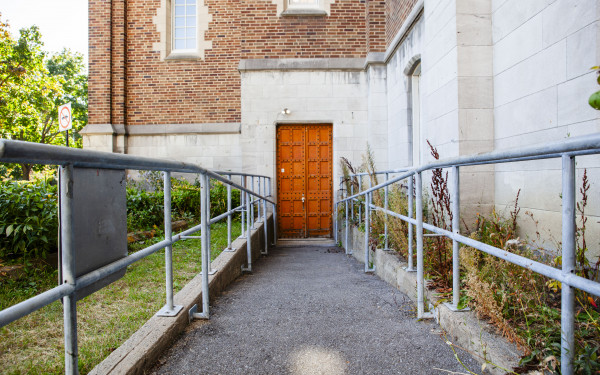A hate letter to the shuttle bus
Commuting alternatives for when you don’t want an unpleasant, unreliable, hour-long bus ride between campuses
Concordia trumpets its shuttle bus as a free and convenient way for students to commute from one campus to the other, but for many it’s not enough.
When I decided to enter a program that was split between campuses, I had intended to rely primarily on the shuttle. When I took it for my first 8:45 a.m. class at Loyola, I was met with a line that wrapped around the side of the Hall Building, unsure if I would make it for my lecture on time.
Until recently, the bus had scheduled departures in the mornings and evenings, but for much of the day, departed from either campus every 30 to 35 minutes. Confusing? Yes. Unreliable? Also yes. With a travel time of around 30 minutes either way, the commute could take over an hour.
The trip itself is also often an unpleasant experience. At peak hours, the bus is usually stuffed with students and the unlucky last few to board might not have the luxury of having something to hold on to. I’ve been in this precarious situation and there is only so much core strength I have to stabilize myself first thing in the morning (pre-caffeinated, since the shuttle does not allow beverages unless they are in a spill-proof container). It’s a ride filled with abrupt stops and consequent apologies to your fellow shuttle sufferers.
The shuttle also has a limited schedule as it does not run on weekends or holidays, ceases service at 7:45 p.m. on Fridays, further separating students from the two campuses.
However, when there is a will to get to the other campus, there is a way.
Montreal’s STM operates the city’s public transit, running over 2,000 buses and metro cars daily. One can take the 105 Sherbrooke from Vendôme Station on the orange line, but I’ve found my favourite shuttle alternative with the Exo commuter train. The Exo trains can get students from the station near SGW to the station near Loyola in 11 minutes. Factoring walking times from the respective campus libraries, one can add on a ten minute walk on either end of the commute.
If you have an OPUS card or pay for STM tickets in Montreal’s zone A, it costs the same as taking the bus or metro, and it’s far less crowded than the shuttle. Along with a reported 95 per cent punctuality (compared to 81 per cent by STM buses), once you’re on the train, it’s smooth sailing.
The Exo is primarily used for commuters to travel from Montreal’s suburbs or those who live outside the island to their workplaces downtown, and the schedule reflects that. There are often long gaps in between departures, especially for off-peak times and directions.
The shuttle has its merits, but I needed to find an alternative that worked for me. I wanted a clear schedule, smooth ride and a more pleasant commuting environment. It’s not that the shuttle is useless, nor that I don’t understand why it has the restrictions it does, but it’s far from the only option for students to travel between campuses.
This article originally appeared in Volume 44, Issue 4, published October 17, 2023.


_600_832_s.png)




